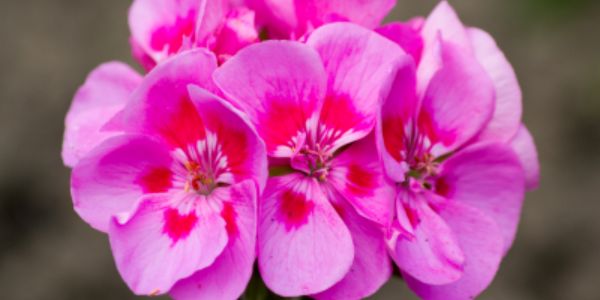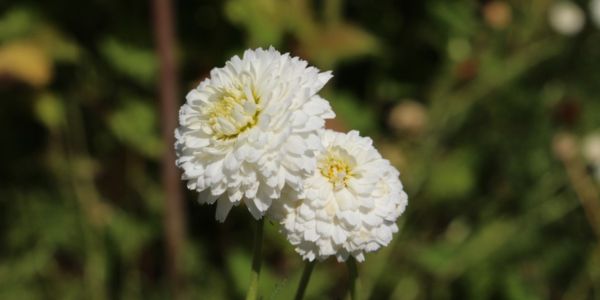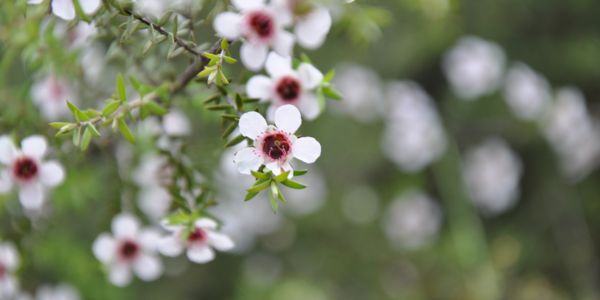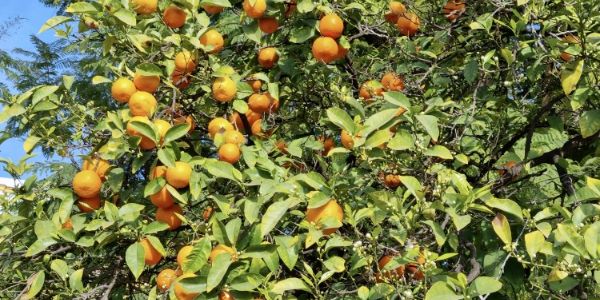We’re here to provide you with more information or help answer any questions you might have. Send us a note and we’ll get back to you as soon as possible.



EarthOil by Univar Solutions offers a complete range of floral essential oils, most of them certified organic. Extracted from different parts of the plants, these essential oils are all obtained by steam distillation to guarantee a high-quality end product with a powerful fragrance.
Open your senses to the blossoming of a summer garden!
The common properties that the floral scented essential oils share include calming properties, emotional benefits and virtues to beauty products. These scents are often reminiscent of the flowers from which they are extracted and can be described as graceful, powdery, subtle, romantic, and even poetic. They are often sweet-smelling and create a feeling of cheerfulness. Most often classified as middle notes in perfumery, floral scents are considered classic and timeless.
Essential oils continue to grow in popularity with consumers, who are exploring different oil ranges and understanding their individual properties and benefits. For formulators, essential oils are a fantastic way to differentiate products, and build a line that’s truly unique to your brand.
Geranium Oil
Among one of the most important and most commonly used ingredients in perfumery, Geranium Oil is often referred to as 'Rose Geranium Oil'. Originated from South Africa, it is also grown in Reunion, Madagascar, Morocco and Egypt and likes a warm, dry climate. Seeding usually occurs late in the year around November and December with the first cut and distillation occurring in June, where the oil is steam-distilled from the leaves and stems of the flower. Then the plant continues to grow until the second cut around October.
Multifaceted essential oil within the entire flavor and fragrance industry, Geranium Oil has served as a versatile ingredient for countless perfumery applications. The Egyptian oil especially is recognized as one of the "rosiest" variants of the geranium flower, with a pleasantly sweet and floral aroma, as well as minty and herbaceous notes. The oil's odor retains this complexity throughout its dry down, blending well with innumerable other fruity, floral, and herbal ingredients. It can also be used for its relaxing properties.
Name: Geranium Oil (Organic)
INCI name: Pelargonium graveolens Oil
Botanical name: Pelargonium graveolens




Rose Oil
Known as the queen of flowers, roses grow and are collected from across the Bulgarian Rose Valley. They offer precious and rare essential oil obtained from the petals of the flowers. Around 3,000 kg of petals are necessary to capture 1 kg of Rose Oil. Like many flowers, roses are fragile, so manual harvesting starts very early in the morning, at dawn, when petals have their highest oil level. Distillation takes place long into the night to ensure petals are distilled on the same collection day.
Pure ‘royalty’ of essential oils, our Rose Oil exhibits a characteristic and powerful smell. Its subtle and intoxicating perfume provides floral, rosy, herbaceous, fresh and sweet olfactory notes.
Name: Rose Oil Bulgarian / Rose Oil COSMOS (Organic) / Rose Oil Low ME COSMOS (Organic)
INCI name: Rosa damascena Flower Oil
Botanical name: Rosa damascena
Roman Chamomile Oil
Native to Europe and North Africa, Roman Chamomile is an iconic plant of the Chemillé region, where it was imported in the early 19th century by a Parisian herbalist. It blooms in June and July and is harvested mechanically when the first faded flowers appear. As soon as it is picked, it must be distilled to prevent any fermentation and any loss of quality for the essential oil.
Roman Chamomile Oil has a sweet and herbaceous aroma with bright apple notes and is widely used and highly valued in perfumery and cosmetics. Its olfactory qualities blend with both floral and aromatic perfumes. Its warmth and gentleness can help create a relaxing and calming atmosphere.
Name: Roman Chamomile Oil (Organic)
INCI name: Anthemis nobilis Flower Oil
Botanical name: Anthemis nobilis




Blue Chamomile Oil
Native to Europe, northern and western Asia and North Africa, this particular chamomile is the ‘German’ type Matricaria chamomilla (L.). It has a high content of azulene (also referred to as chamazulene) and also contains Alpha Bisabolol Oxide-A & B and Bisabolone Oxide-A. Its colour varies from deep blue to bluish-green.
It is often used as a flavouring, especially in herbal teas and as a common raw material in the perfumery and cosmetic industry for its calming properties. Its olfactory properties can be described as sweet, smoky, floral, fruity apple and herbal, which add a warm base to any fragrance.
Name: Blue Chamomile Oil (Organic)
INCI name: Matricaria recutita Flower Oil
Botanical name: Matricaria recutita chamomilla (L.)
Lavender Oil
Bulgaria is the home of the world largest growing area for Lavender Oil. Distilled from the plant flower spikes, it is one of the most traditional essential oils. Harvesting usually begins during the first two weeks of July and the season lasts around 2 weeks. The plant thrives in oceanic climates with a dry, rocky, sandy terrain like the Mediterranean region.
Widely used in various perfume compositions and fragrances as well as in cosmetics applications, Lavender Oil exhibits calming and relaxing benefits. The olfactory qualities of this slightly yellowish oil are described as herbal, floral and sweet.
Name: Lavender Oil (Organic)
INCI name: Lavandula angustifolia Oil
Botanical name: Lavandula angustifolia




Mānuka Oil
Relatively new botanical ingredient for the Personal Care market, Mānuka Oil is steam distilled from the leaves and the terminal branches of the scrub tree Leptospermum scoparium, native to both New Zealand and Australia. Down Under Enterprises’ Mānuka Oil is produced throughout the year under a fair share partnership model with Māori Kaitiaki in the East Cape region of New Zealand, who are working the land of their ancestors.
Mānuka Oil opens with pleasant rosy top notes and gradually transitions into earthy dry, woody under notes. Its aroma is romantic and is sure to mesmerize you. It blends well with rose, vanilla, cedarwood, sandalwood and musk.
Highly effective natural ingredient when formulating for cosmetic products, such as body washes and deodorants, learn more about its properties! White Paper_Applications of Mānuka Oil in Personal Care
Name: Pure Manuka Oil - Premium Grade
INCI name: Leptospermum scoparium Branch/Leaf Oil
Botanical name: Leptospermum scoparium
Petitgrain Oil
Native to Paraguay, Spain and Morocco, the Citrus aurantium amara is more commonly known as the bitter orange plant. This hardy, evergreen tree can grow up to 6 meters tall in the wild and only to half this height in cultivation. Petitgrain essential oil is produced from the twigs, branches and leaves of the tree. Harvesting and steam distillation mainly occurs between the months of October and March, even if the essential oil can be produced throughout the year.
Petitgrain comes from the same botanical species as neroli and bitter orange, whereas Neroli Oil is distilled from the blossoms and Orange Oil is typically cold pressed from the rinds of the fruits. Because of this, Petitgrain Oil demonstrates a less floral and citrus fragrance compared to Neroli or Orange Oil. Its aroma is sweet, fresh, and green, with a subtle floral and woody characteristic. It is used in personal care products and especially in perfumery for its powerful and intoxicating aroma.
Name: Petitgrain Oil (Organic)
INCI name: Citrus aurantium amara Leaf/Twig Oil
Botanical name: Citrus aurantium var. amara




Neroli Oil
Neroli is one of the most common essential oils in the world of fragrances. It is steam distilled from the fragrant flowering blossoms of the Citrus aurantium var amara, the bitter orange tree native to the foothills of the Himalayas. Spread by Arab travellers through the Middle East and around the Mediterranean Sea, the tree is nowadays mostly grown in North Africa, i.e. Tunisia, Morocco, and Egypt, known as the world’s largest producers of Neroli. The Tunisian Neroli, soft and delicate, prettier and more floral than the Egyptian one, is the most appreciated oil by the perfumers. After plantation, the first flowers cannot be picked for a minimum of five years. It takes another five years for the tree to be in full production. The bitter-orange trees typically blossom from late March to April. One ton of flowers is necessary to produce one kilogram of essential oil.
The name Neroli was given in honor of Anne Marie Orsini, Princess of Nerola, who used the oil to scent her gloves. Indeed, it emits a rich, floral scent with citrusy overtones and is used as a base note in perfumes and scented products. Because of its sweet aromatic smell recalling the one of jasmine, neroli is widely used in fragrances for both fine fragrances (perfumes, cologne, eau de toilette, etc) , functional perfumery (body care, home care, fabric care, etc.) and aromatherapy, where its soothing effect on mood is valued. It is also an important ingredient for the flavour industry. Rumour has it that it is one of the secret ingredients of the Coca-Cola recipe!
Name: Neroli Oil (Organic)
INCI name: Citrus aurantium amara Flower Oil
Botanical name: Citrus aurantium var. amara
Lavandin Oil
Lavandin is not a natural plant in the true sense, but a spontaneous hybrid obtained by crossing two species of Lavandula. It grew wild in the south of France; bees carried the pollen from higher altitudes, where Lavandula angustifolia was blossoming, to the lower altitudes, where Lavandula latifolia could be found. That explains its botanical name: Lavandula hybrida. Its flowers are particularly well-known thanks to their blue and purple colors.
The essential oil is obtained from the flowering tops of the plant and is distilled immediately after the harvest. Its aroma and properties are quite similar to Lavender's, but it has asserted its own olfactory identity. More intense and sharp, with underlying touches of Lavender’s sweet-floral scent while demonstrating camphoraceous top notes and woody herbaceous undertones. The strong camphor is appreciated in fine perfumery and room fragrances and is often used in men’s scents. Finally, the fresh-smelling Lavandin Oil is renowned for its calming, relaxing and soothing properties and is further valued in personal care, food and household products.
Name: Lavandin Super Oil (Organic)
INCI name: Lavandula hybrida Oil
Botanical name: Lavandula hybrida


| Product Name | Supplier | Package Type | Weight | Price (UOM) | Price (Package) | ||
|---|---|---|---|---|---|---|---|
| ROSE OIL BG 0.1KG ALUMINIUM SMALL PACK | EARTHOIL - UNIVAR | ALUMINIUM SMALL PACK | 0.10 kgs | -- |
Request Quote
|
-- | |
|
|
|||||||
| ROSE OIL COSMOS ORGANIC 0.5KG ALUMINIUM SMALL PACK | EARTHOIL - UNIVAR | ALUMINIUM SMALL PACK | 0.50 kgs | -- |
Request Quote
|
-- | |
|
|
|||||||
| ROSE OIL COSMOS ORGANIC 0.1KG ALUMINIUM SMALL PACK | EARTHOIL - UNIVAR | ALUMINIUM SMALL PACK | 0.10 kgs | -- |
Request Quote
|
-- | |
|
|
|||||||
| ROSE OIL LOW ME COSMOS ORGANIC 1KG ALUMINIUM SMALL PACK | EARTHOIL - UNIVAR | ALUMINIUM SMALL PACK | 1.00 kgs | -- |
Request Quote
|
-- | |
|
|
|||||||
| ROSE OIL BG 1KG ALUMINIUM SMALL PACK | EARTHOIL - UNIVAR | ALUMINIUM SMALL PACK | 1.00 kgs | -- |
Request Quote
|
-- | |
|
|
|||||||
| ROSE OIL COSMOS ORGANIC 1KG ALUMINIUM SMALL PACK | EARTHOIL - UNIVAR | ALUMINIUM SMALL PACK | 1.00 kgs | -- |
Request Quote
|
-- | |
|
|
|||||||
| ROMAN CHAMOMILE OIL ORGANIC HU 10KG ALUMINIUM SMALL PACK | EARTHOIL - UNIVAR | ALUMINIUM SMALL PACK | 10.00 kgs | -- |
Request Quote
|
-- | |
|
|
|||||||
| GERANIUM OIL ORGANIC 1KG ALUMINIUM SMALL PACK | EARTHOIL - UNIVAR | ALUMINIUM SMALL PACK | 1.00 kgs | -- |
Request Quote
|
-- | |
|
|
|||||||
| ROMAN CHAMOMILE OIL ORGANIC HU 1KG ALUMINIUM SMALL PACK | EARTHOIL - UNIVAR | ALUMINIUM SMALL PACK | 1.00 kgs | -- |
Request Quote
|
-- | |
|
|
|||||||
| ROSE OIL LOW ME COSMOS ORGANIC 0.1KG ALUMINIUM SMALL PACK | EARTHOIL - UNIVAR | ALUMINIUM SMALL PACK | 0.10 kgs | -- |
Request Quote
|
-- | |
|
|
|||||||
| LAVENDER OIL ORGANIC BG 5KG ALUMINIUM SMALL PACK | EARTHOIL - UNIVAR | ALUMINIUM SMALL PACK | 5.00 kgs | -- |
Request Quote
|
-- | |
|
|
|||||||
| GERANIUM OIL ORGANIC 5KG ALUMINIUM SMALL PACK | EARTHOIL - UNIVAR | ALUMINIUM SMALL PACK | 5.00 kgs | -- |
Request Quote
|
-- | |
|
|
|||||||
| EVENING PRIMROSE OIL CRUDE ORGANIC 190KG PLASTIC DRUM | EARTHOIL - UNIVAR | PLASTIC DRUM | 190.00 kgs | -- |
Request Quote
|
-- | |
|
|
|||||||
| EVENING PRIMROSE OIL CRUDE ORGANIC 25KG PLASTIC JERRYCAN | EARTHOIL - UNIVAR | PLASTIC JERRYCAN | 25.00 kgs | -- |
Request Quote
|
-- | |
|
|
|||||||
| GERANIUM OIL ORGANIC 20KG PLASTIC JERRYCAN | EARTHOIL - UNIVAR | PLASTIC JERRYCAN | 20.00 kgs | -- |
Request Quote
|
-- | |
|
|
|||||||
| EVENING PRIMROSE OIL CRUDE ORGANIC 190KG STEEL DRUM | EARTHOIL - UNIVAR | STEEL DRUM | 190.00 kgs | -- |
Request Quote
|
-- | |
|
|
|||||||
| LAVENDER OIL ORGANIC BG 175KG STEEL DRUM | EARTHOIL - UNIVAR | -- | 175.00 kgs | -- |
Request Quote
|
-- | |
|
|
|||||||
| LAVENDER OIL ORGANIC BG 180KG STEEL DRUM | EARTHOIL - UNIVAR | -- | 180.00 kgs | -- |
Request Quote
|
-- | |
|
|
|||||||
| LAVENDER OIL ORGANIC BG 25KG STEEL JERRYCAN | EARTHOIL - UNIVAR | STEEL JERRYCAN | 25.00 kgs | -- |
Request Quote
|
-- | |
|
|
|||||||
| LAVENDER OIL BG 5KG STEEL SMALL PACK | EARTHOIL - UNIVAR | STEEL SMALL PACK | 5.00 kgs | -- |
Request Quote
|
-- | |
|
|
|||||||
| LAVENDER OIL ORGANIC BG 170KG STEEL DRUM | EARTHOIL - UNIVAR | STEEL DRUM | 170.00 kgs | -- |
Request Quote
|
-- | |
|
|
|||||||
| GERANIUM OIL ORGANIC 25KG PLASTIC JERRYCAN | EARTHOIL - UNIVAR | PLASTIC JERRYCAN | 25.00 kgs | -- |
Request Quote
|
-- | |
|
|
|||||||
| LAVENDER OIL BG 180KG STEEL DRUM | EARTHOIL - UNIVAR | STEEL DRUM | 180.00 kgs | -- |
Request Quote
|
-- | |
|
|
|||||||
| LAVENDER OIL BG 25KG STEEL JERRYCAN | EARTHOIL - UNIVAR | STEEL JERRYCAN | 25.00 kgs | -- |
Request Quote
|
-- | |
|
|
|||||||
| ROSE OIL LOW ME 1KG ALUMINIUM SMALL PACK | EARTHOIL - UNIVAR | ALUMINIUM SMALL PACK | 1.00 kgs | -- |
Request Quote
|
-- | |
|
|
|||||||
Applications, Grades & Characteristics
Floral oils can be used in a variety of personal care formulations such as:
- Body washes and scrub
- Bath or cleansing oils
- Hair care
- Face, body or hand care
- Soap bar
- Balms
Additional Content






Get in touch, 24 hours a day, 7 days a week.









